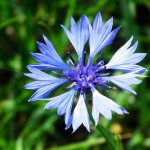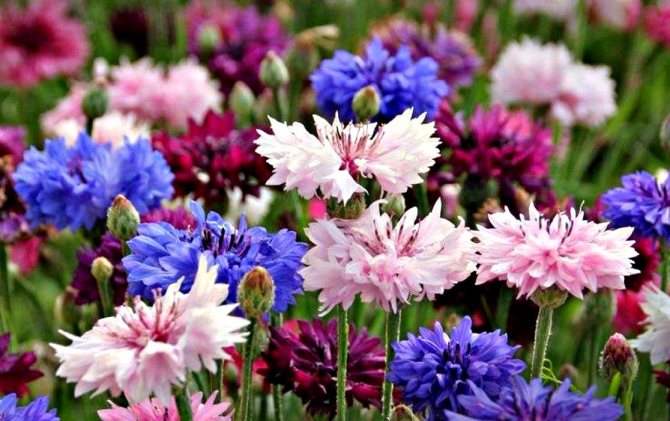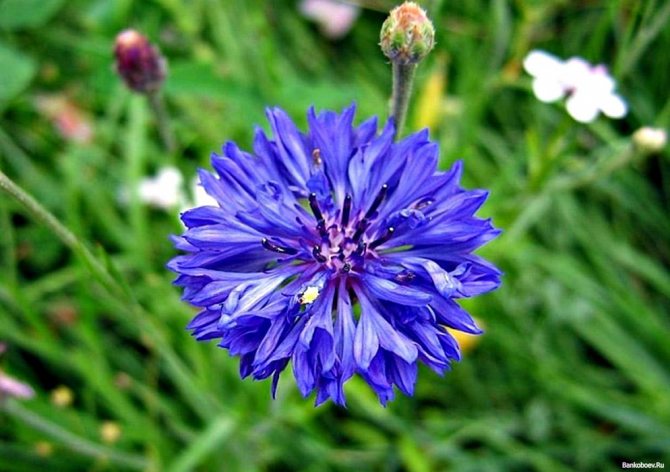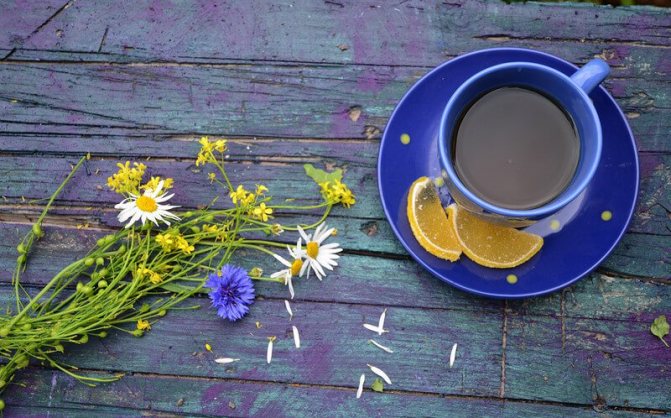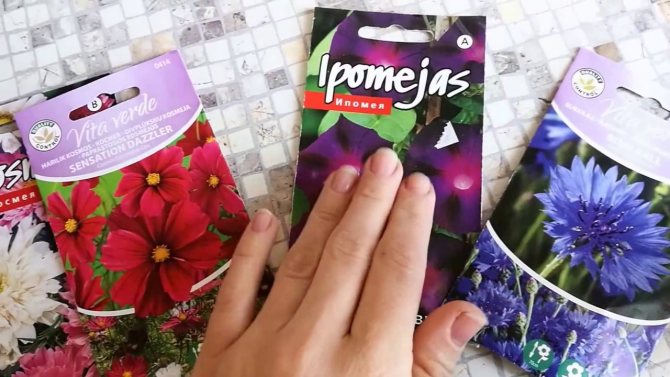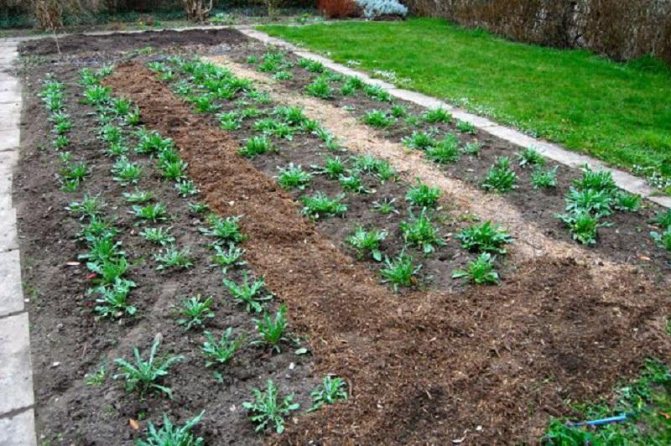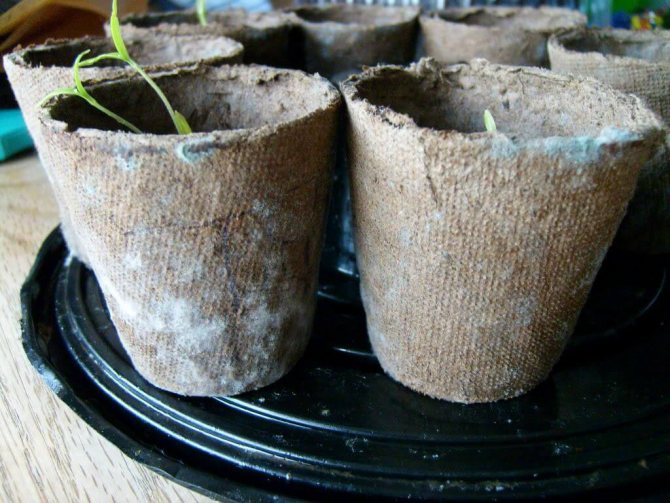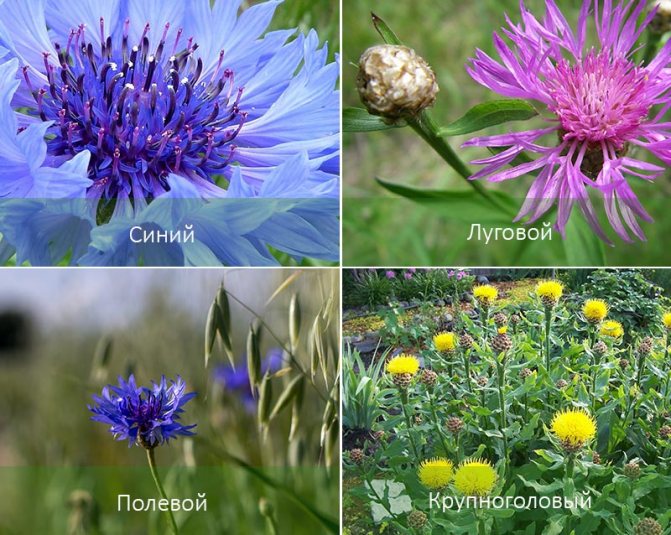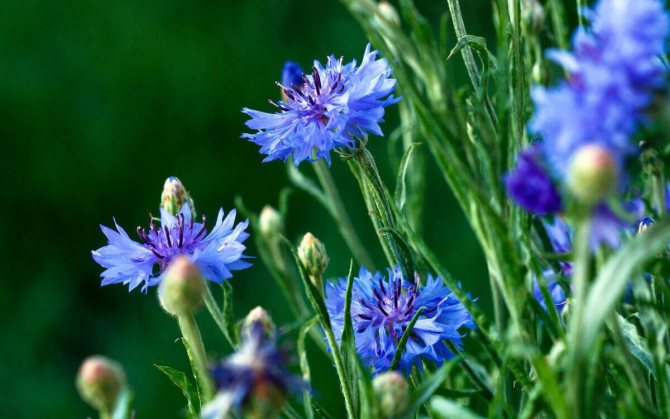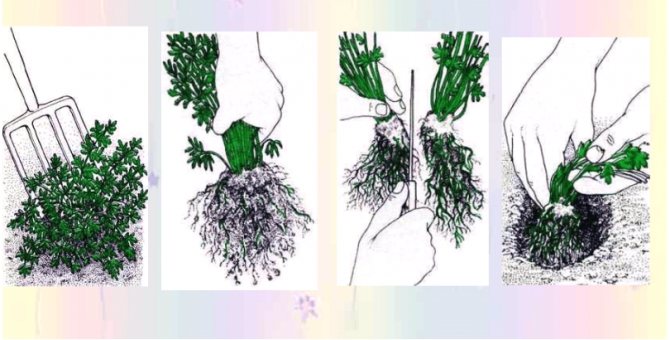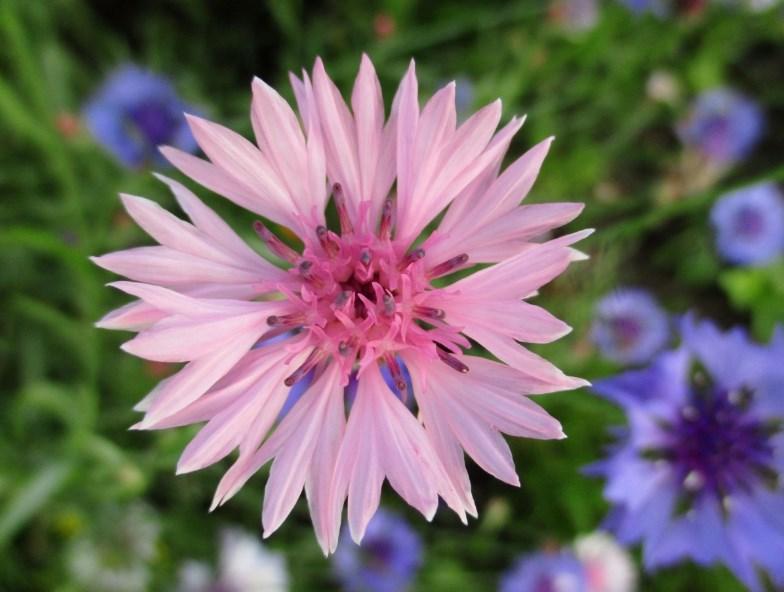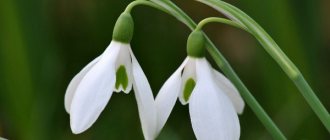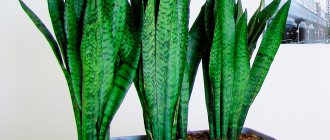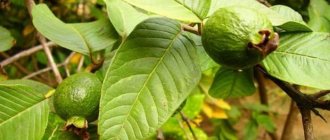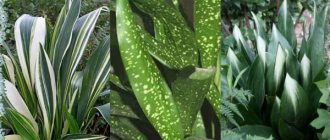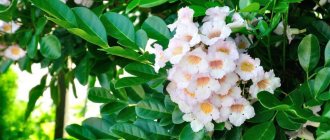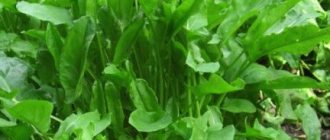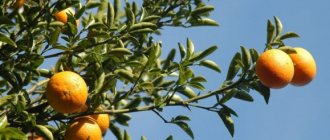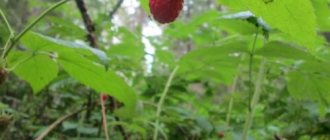The genus Cornflower (from Lat. Centaurea) consists of more than 730 species of herbaceous plants of the Asteraceae family. The name was given to him by Karl Linnaeus, using a centaur. In ancient Greek mythology, it was this flower that was used by Chiron as an antidote to the poison of the Lernaean hydra. According to another hypothesis, the name of the cornflower has been known since the time of the famous physician - Hippocrates and in translation means "stabbing bulls".
2.Plant description - what it looks like
Herbaceous flowering plants with thin, tough, profusely branched shoots. There are varieties with both erect stems and ground cover plants with lodging shoots.
Root system often fibrous, powerful, with many roots, but some species have a single taproot - for example, the Russian cornflower.
At the base of the plants there is leaf socket, which is replaced 2 times a year, and therefore always remains lively and green. The first basal leaves appear in early spring and persist throughout the summer months. The second time the rosette overgrows in the fall - before the onset of frost.
On the shoots leaves green, linear, reaching a length of 5 - 7 cm, sessile, located alternately. The leaf blades are entire or with small denticles along the edges; in many varieties, they are covered with short, light pubescence. Interestingly, the higher the leaf is, the smaller its size will be.
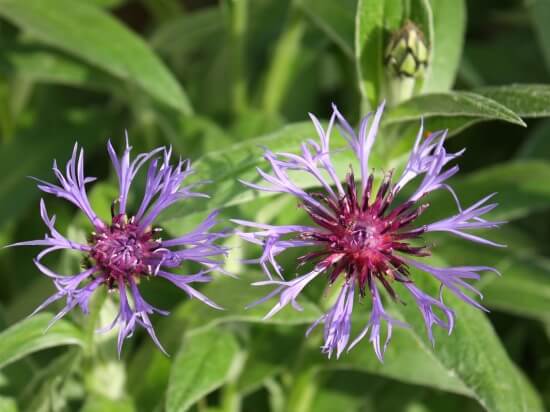
On the tops of the shoots are large inflorescences, characteristic of the Asteraceae family, consisting of many very small, ligulate at the edges and tubular flowers in the center of the basket. Individual flowers have long, narrow petals bent in different directions.
Flower baskets can be painted in lavender, purple, blue, pink, yellow, burgundy, red or white. After flowering, dry, light brown achenes are formed when ripe.
Depending on the species, there are annuals, biennials and perennials. When damaged, the leaves and stems of the flower emit a specific aroma. The genus is extensive and contains about 500 plant species.
↑ Up,


Height... The height of plants varies greatly depending on the species and can range from 20 - 30 cm to 1 m.
2.1 When the cornflower blooms
In most varieties, the first buds bloom in June, flowering can last throughout the summer months, until mid-autumn - when it is interrupted by the onset of the first frost.
Each bush has a flowering period of up to 1.5 months. Sometimes, with the timely removal of old buds, the onset of re-flowering in the fall is possible.
↑ Up,
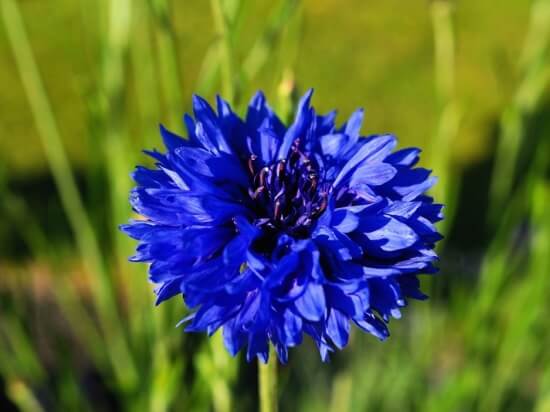

Application


For those who want to normalize the digestive process, improve appetite or recover from a cold, it is useful to drink tea brewed with cornflower. Flowers are added to black or green tea, the drink is drunk twenty minutes before meals. It actively removes toxins. They also prepare a healing mixture from various components. To do this, take a teaspoon of bearberry and licorice root, pour 500 milliliters of boiling water and leave on the fire for 3-4 minutes, then add the same amount of cornflower, cool the solution and insist for several hours. They take the medicine three times a day under Art. spoon.
3.Healing properties of cornflower, use in folk medicine
Plants are believed to have diuretic properties and are therefore used in folk medicine to treat kidney disease. This plant has a positive effect on the state of the liver and gallbladder, having a choleretic effect.
For colds, the flower is used as a diaphoretic and antipyretic agent. It is also believed that dried plant parts have an antispasmodic and analgesic effect, and are capable of killing microbes.
↑ Up,
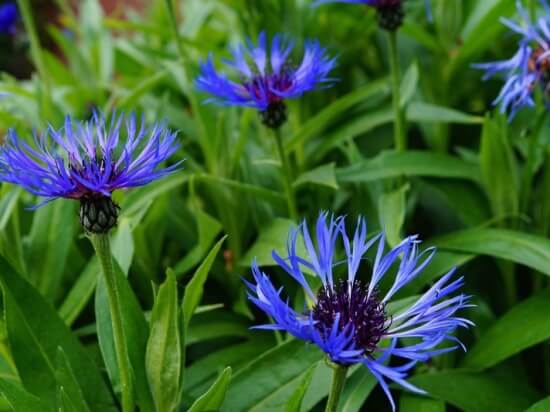

The wound-healing properties of blue cornflower have been known for a long time, which is also able to eliminate bleeding gums.
In order for the plants to have the best healing effect, they must be properly prepared and dried. The collection of medicinal raw materials is carried out immediately after the beginning of flowering - it is at this time that the green mass contains the maximum amount of nutrients.
↑ Up,
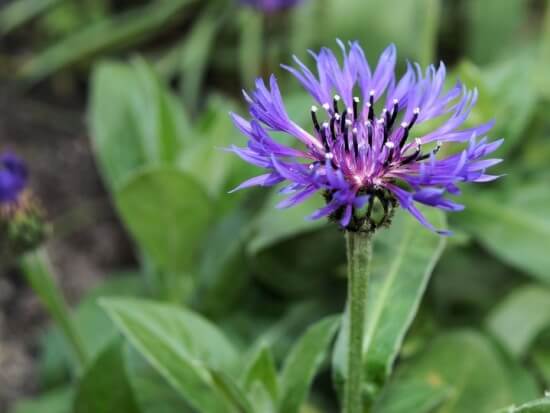

The stems are cut with a sharp, sterile pruning shears. leaving only 5 - 7 cm of growth at the roots. The cut pieces are tied into bundles and hung upside down under a canopy or in some other warm and well-ventilated place. You can not dry medicinal plants in the sun - ultraviolet light can destroy many useful compounds.
The dried grass is crushed, poured from canvas or paper bags and stored for 2 - 3 years, using as needed.
It is not worth using the flower uncontrollably in its composition there are toxic glycosides and if the dosage is exceeded, poisoning may occur.
↑ Up,
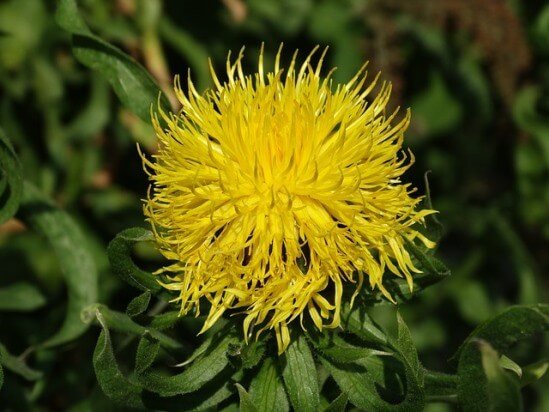

3.1. Varieties and types of cornflowers:
3.2. Cornflower meadow or pink - Centaurea jacea
European variety. The plant is characterized by moisture-loving and rather cool conditions of existence, unlike other species, it easily tolerates partial shade. When grown outdoors, it often spreads on its own and clogs up the entire free space of the garden. The inflorescences are often colored lilac. Young shoots and leaf plates are covered with short whitish pubescence.
↑ Up,


3.3. Russian cornflower - Centaurea ruthenica
Tall perennials, whose height often exceeds 1-1.5 meters. The variety is found in Eastern Europe, the Caucasus, Western Siberia and Central Asia. Plants are notable for their enviable frost resistance and often tolerate temperatures down to -40 degrees without shelter. Fluffy inflorescences are colored in a light yellow shade.
↑ Up,


3.4 Mountain cornflower - Centaurea montana
European mountain cornflower with a height of 30 to 70 cm. Flowering occurs in late spring and lasts throughout the summer. Inflorescences are deep blue in diameter up to 5 cm.
↑ Up,
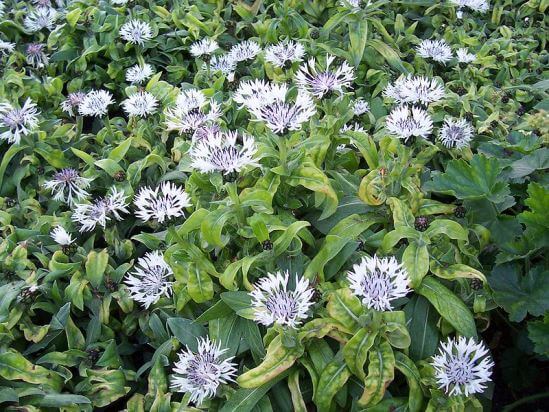

3.5. Blue cornflower, field or sowing - Centaurea cyanus
An annual flowering plant native to Europe, it is often found in cereal crops in the fields. Bushes reach a height of 40 - 90 cm, often found in North America and Australia. It is often found as a cultivated plant in gardens. Inflorescences are blue, pink or white.
↑ Up,
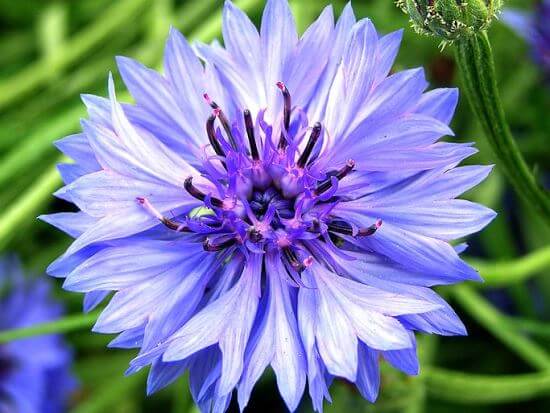

3.6 Large-headed cornflower - Centaurea macrocephala
Stocky sprawling bushes of this species originate from the Caucasus and are distinguished by large yellow inflorescences up to 4 cm in diameter.The plant height reaches 90 -120 cm.
↑ Up,


3.7 Soft cornflower - Centaurea mollis
A European species that is often found on mountain ranges. Plant height is 30 - 70 cm, flower heads are mostly blue. Leaves are green, lanceolate, whole-edged, pubescent with white hairs.
↑ Up,
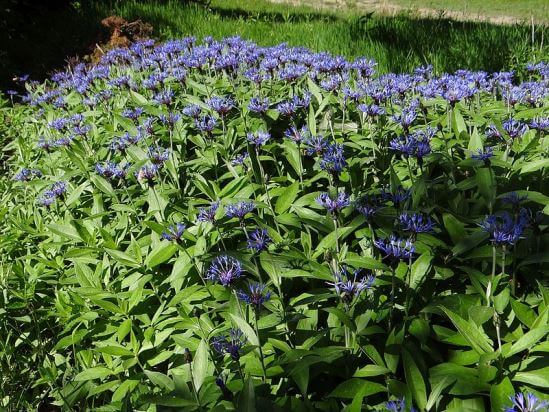

3.8 Spreading cornflower - Centaurea diffusa
A short, robust flowering perennial, originating in the Mediterranean. Plants reach only 10 - 60 cm.in height, depending on external conditions. Flower baskets are painted white or pink.
↑ Up,
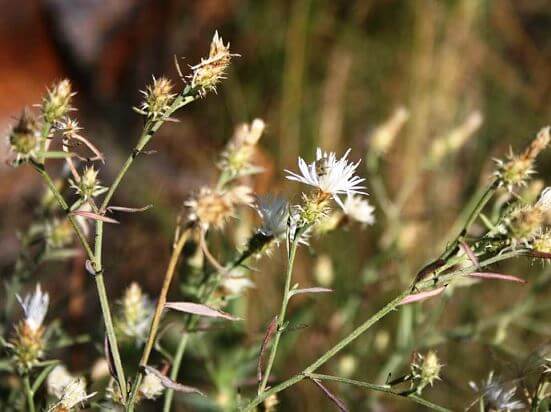

3.9. Phrygian cornflower - Centaurea phrygia
A European variety of cornflower with tough, erect shoots and bluish-green, oblong-lanceolate leaf blades. The inflorescences are colored lilac or purple.
↑ Up,
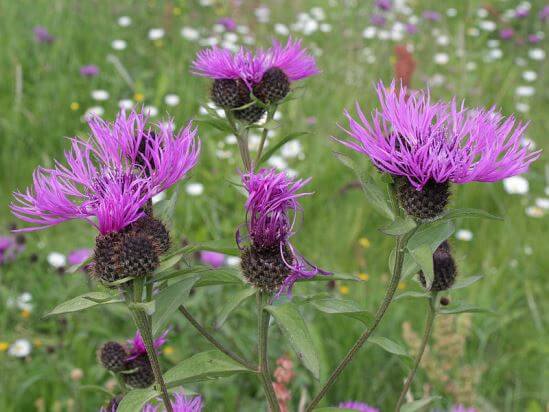

3.10 Whitewashed cornflower - Centaurea dealbata
Bright flowering plants native to the foothills of the Caucasus. They are bushes 60 - 80 cm high with large inflorescences of pink, lilac or purple hues. Often grown in gardens as a cultivated plant. The inflorescences reach 5 cm in diameter.
↑ Up,
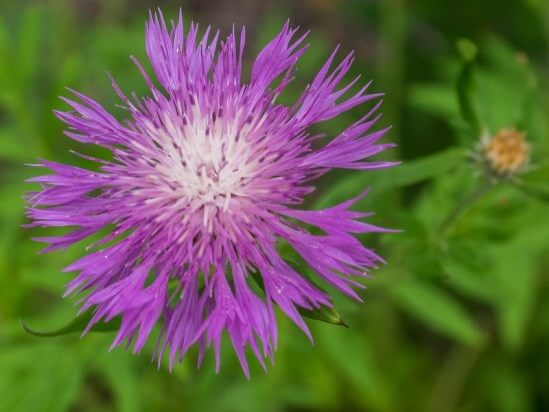

3.11. Fischer's Cornflower - Centaurea fischeri
Blooming perennial with a height of 40 to 70 cm, originates from the Caucasus. Inflorescences are delicate, airy, reach a diameter of 9 cm and are painted in a white, cream or pinkish shade.
↑ Up,


3.12 Rough or scabiosa cornflower - Centaurea scabiosa
Plants originate from Europe and are distinguished by high growth - they reach 90 cm in favorable conditions. prefer nutrient-poor lands and sun-exposed spaces. Flower baskets reach 5 cm in diameter, often painted in lilac or cream shades. The plants have deeply carved, finger-like green leaves.
↑ Up,
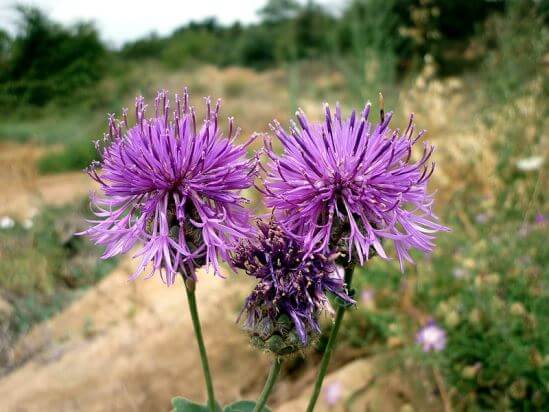

3.13. Willow Cornflower - Centaurea salicifolia
Mediterranean species, often exceeding 1 - 1.5 m in height. Erect shoots are often branched at the base. Inflorescences are yellow, pink, lilac or white.
↑ Up,
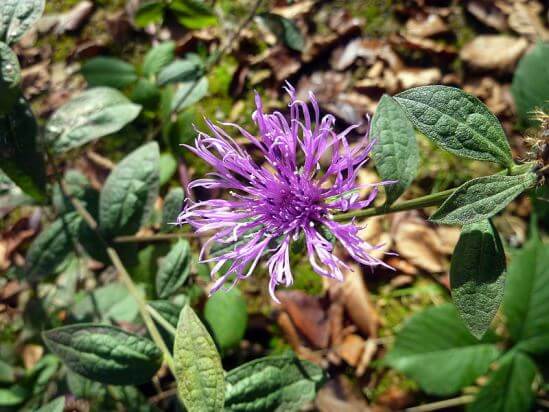

3.14 American Cornflower - Centaurea americana
This species is often grown as a garden plant, as it has large, fluffy flower heads, painted in a pale pink, lilac, white or reddish hue. This flowering annual cornflower comes from South America. The diameter of the inflorescences often reaches 10 cm.
↑ Up,
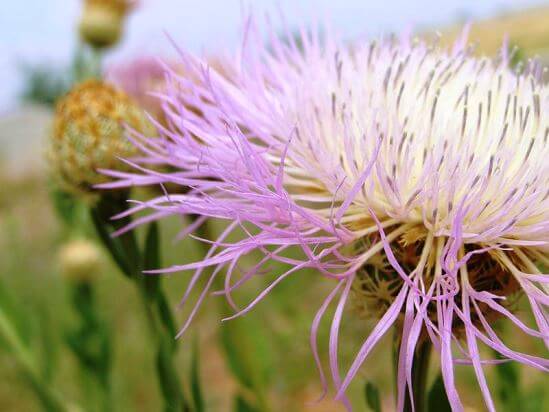

Contraindications
First of all, you should not remove individual intolerance from the accounts. Several trace elements make the plant toxic. We are talking about cyanic potentially dangerous components that cornflower contains. The healing properties and contraindications are very different in percentage terms, nevertheless, it must be borne in mind that the plant is slightly poisonous. Therefore, its use is prohibited for pregnant women, as well as for women during lactation and children. It is also known that folk remedies for uterine bleeding are not made from it. Moreover, in the presence of such a problem, it cannot be used in any form. Coumarins included in cornflower are very strong anticoagulants, they inhibit blood clotting.
4. Planting and caring for cornflowers in the garden
Cornflower is extremely unpretentious and suitable for inexperienced gardeners. Plants easily tolerate neglect and do not require careful maintenance. When grown outdoors, they can easily tolerate both a small bay and drought, withstand a wide variety of temperature conditions.
↑ Up,
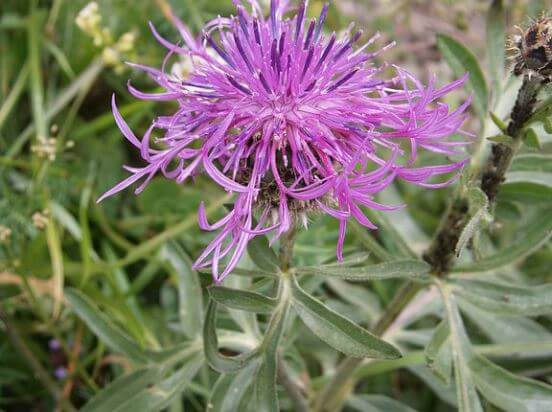

For growing cornflower it is worth choosing a sunny site - when grown in partial shade, the bushes will become loose and elongated. The exception is the western cornflower - it feels good even in partial shade.
Do not use open, windy areas for tall plants - strong gusts can lay and even break plant shoots.
4.1 How and when to plant
Cornflower is planted in open ground both by sowing seeds and using seedlings. Small bushes of seedlings are planted in the spring, immediately after the last night frosts recede. For a flower, a site is preliminarily prepared - they loosen the earth and weed weeds.
Humus or well-rotted manure is mixed into the soil for additional nutrition.If the flower needs to be planted in a fairly heavy loam, then river sand is mixed into it for looseness and improved drainage. Since the cornflower prefers neutral soils, then pre-sour soil is spilled with milk of lime, crushed chalk or wood ash is added.
↑ Up,
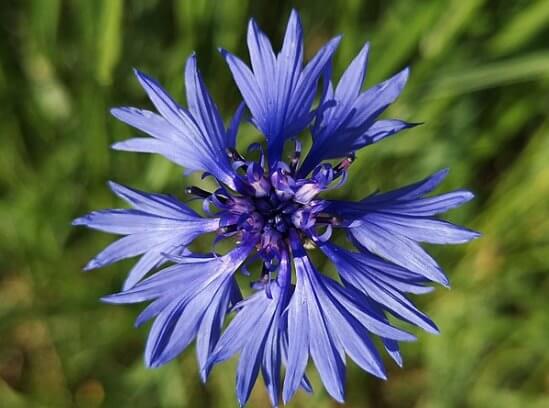

Planting holes are made, the depth and width of which should be greater than the root ball of flowers. The distance between the holes will depend on the planting pattern and plant height. If for ground cover species of compact varieties, 25 - 30 cm between the holes is enough, then tall plants will need 60 - 80 cm. When planting, it is worth making sure that the plants do not shade each other.
Seedlings in cups are watered abundantly a day or several hours before planting and they try to transfer them along with a lump of earth. If it is not possible to cross, then when planting, make sure that the root system of the flower is not broken and the tips of the roots are not directed upwards.
↑ Up,


It is worth placing the bushes so that their root collar is flush with the surface of the ground and is not buried.
The plants are sprinkled with the harvested substrate and lightly tamped. The bushes are watered with plenty of water and during the first 2 - 3 weeks make sure that the soil always remains moist - this way the plants will more easily take root in a new place.
↑ Up,
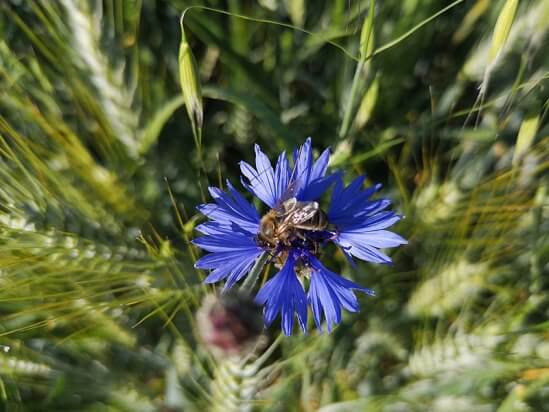

After watering, the bases of the plants are mulched with sawdust, straw or small pieces of bark - this will help delay the growth of weeds and prevent rapid evaporation of moisture from the soil surface.
Annual plants will please with their flowering already during June - August, but among perennials, only the strongest specimens will be capable of flowering, and they form few buds.
↑ Up,
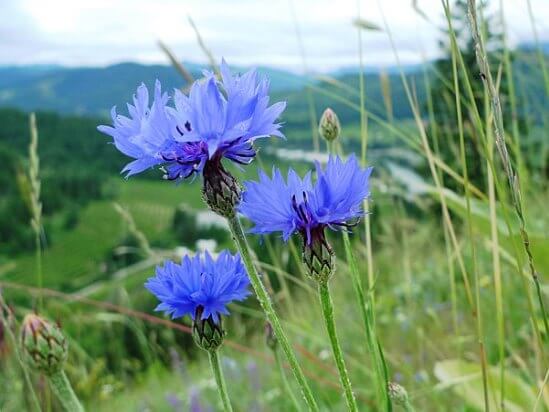

4.2 How to care
When grown in the garden, the flower should be watered and fed in a timely manner. Periodically, they also loosen the soil at the foot of the plants and weed the area.
The frequency of watering will depend on the specific species - V. large-headed, whitened, Russian and Marshall have deep-lying roots that can draw moisture from the soil, respectively, these plants will easily survive a fairly severe drought.
Annuals also prefer light overdrying over bay, other flowers should be given uniform watering, keeping the soil moist but not waterlogged.
↑ Up,


Top dressing is carried out 2 - 3 times per season, using mineral compositions for flowering plants. The flower also reacts positively to the use of organic matter - however, it must be well rotted. Leaf and turf humus, a weak solution of chicken manure, as well as cow and horse manure are used as organic dressings. Cornflowers do not like an excess of fertilizers - their leaves begin to turn yellow.
After flowering, if there is no need for seed reproduction, the flower heads are removed together with the stem, leaving only about 7-10 cm of its height. Such pruning will not only help maintain an attractive appearance, but will also prevent unwanted self-seeding.
↑ Up,


4.3 Wintering in the garden
Plants perfectly tolerate even fairly severe frosts and often do not need additional shelter. Annual bushes are simply dug up and sent to the compost pit. In perennial specimens, the ground part is cut off, leaving only the root rosette of leaves.
↑ Up,
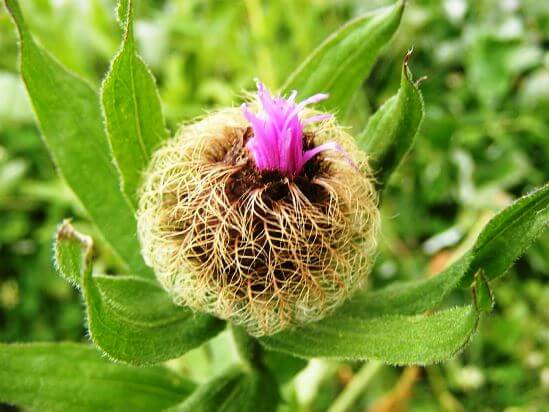

4.4 Diseases and pests
With proper care, the bushes are extremely rarely exposed to some kind of disease; harmful insects also often bypass these plants. Fusarium may appear from fungal diseases. Spider mites can emerge from harmful insects in dry and hot weather.
↑ Up,


Home flower cornflower
At home, the cornflower plant can be grown in pots and flowerpots, decorating terraces, gazebos and garden paths with it. In this case, it is important:
- place the planter in full sun so that the sunlight is evenly distributed over all the leaves;
- monitor the number of bushes in one flowerpot, since too dense plantings will give weak flowering;
- periodically water and fertilize the plant as well as flowers in the open field;
- perennials can be transplanted once every three years to renew the substrate;
- for the winter in warm climates, the pots can be left without shelter, and in colder regions, they can be sheltered or brought indoors.
5 transplant
In the garden, perennial plants can easily do without transplanting for 10 years, and all this time they will retain their decorative effect, and also delight the owners with lush flowering. Most often, a transplant is carried out for the purpose of reproduction - the dug out bushes are divided in different ways, which will depend on the specific species and are planted in new places.
↑ Up,
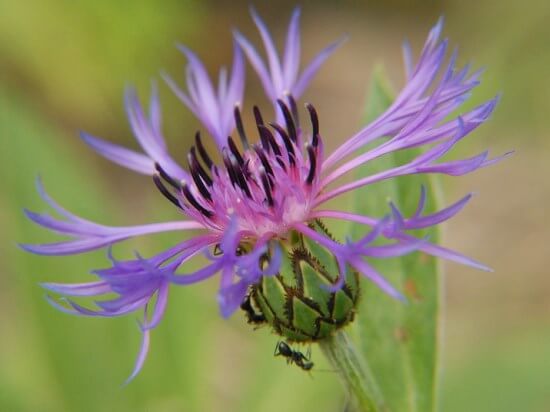

They really do not like transplanting a plant with a deep tap root - such specimens are dug out only if necessary, keeping the root ball intact as much as possible. For other species, the transplant is carried out after flowering, so as not to greatly weaken the plants.
If possible, the bushes are transferred along with a lump of earth - they are overloaded.
↑ Up,
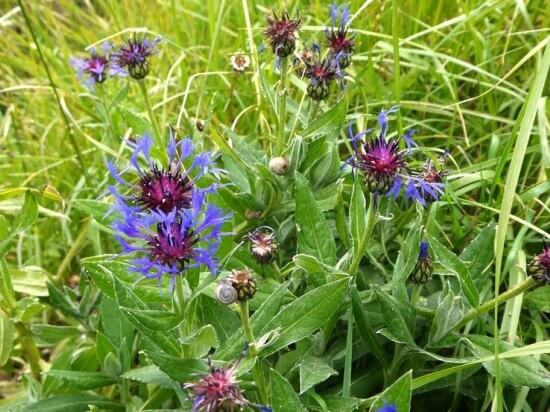

Diseases and pests
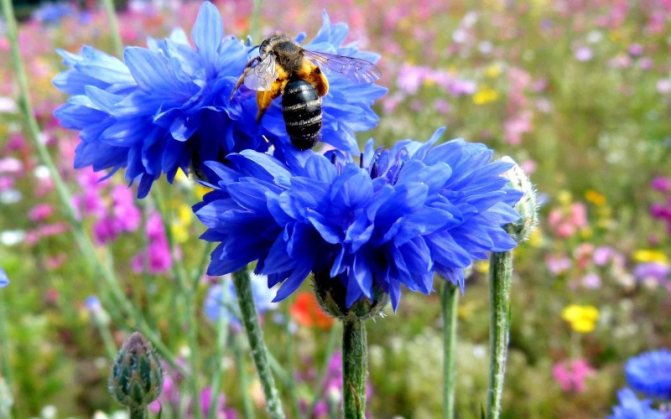

Cornflowers are disease resistant and rarely attacked by pests. The only reason that can weaken the bush and lead to disease is excess moisture. To prevent it, it is necessary to organize a drainage system under the place where the cornflower grows.
If a perennial flower has suffered, many gardeners do not carry out treatment, but simply cut off the affected part of the plant and burn it. Already next year it will return to its former form. Annual species are treated with special solutions, capturing neighboring plants in order to avoid relapse.
6. Reproduction
It is possible both vegetative propagation - growing a flower from cuttings, segments of rhizomes or division of adult plants, and seed. The choice of method will depend on the specific type and variety of flower.
↑ Up,


6.1. Growing cornflower from seeds
Seed reproduction takes place in these plants quite easily and self-seeding can often be found under adult bushes. When propagating by seed, it is worth remembering that it is better not to grow varietal plants from seeds of your own collection - their offspring often will not look as attractive as the mother bushes.
Only species flowers fully retain their appearance. Seed germination lasts for 3 years.
↑ Up,
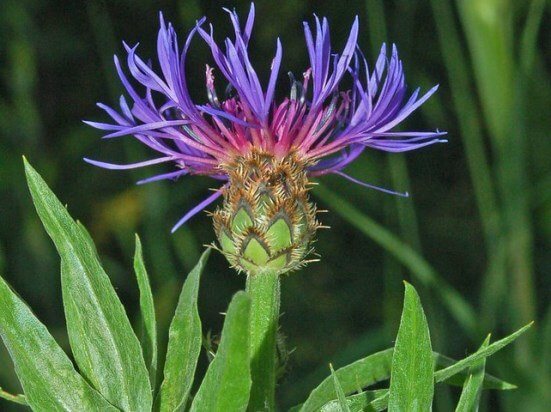

Since vegetative reproduction is impossible in many species, such plants are grown only from seeds - for example, V. Marshall, Russian, field and musky and annual cornflowers.
Sowing seeds is carried out in the autumn months before the onset of frost, at such a time that the first shoots in the fall do not have time to appear. Sowing is also possible in March - immediately after the snow cover melts. Cornflowers are planted on seedlings in late winter - early spring. When planting such plants in open ground, the first buds will decorate them in May.
↑ Up,
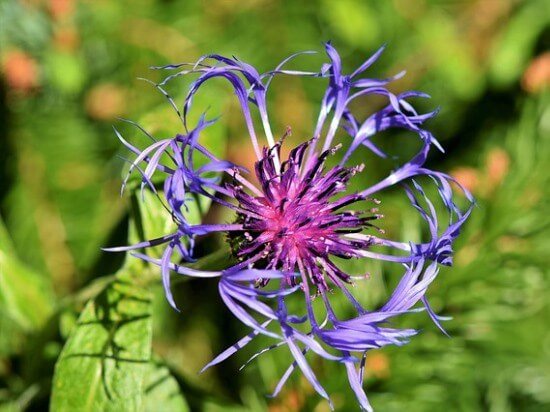

For sowing, prepare a plot of land or seedling containers. Sowing is carried out in grooves about 2 cm deep, the seedlings are watered on top. Autumn plantings do not need to be watered.
When sowing in spring, the first shoots appear within 10 - 14 days. With the appearance of several leaf plates, the seedlings are thinned out or dived into separate pots, leaving only the strongest and strongest bushes. After diving or planting, after 10 - 15 days, cornflowers are fed with a very weak solution of nitrogen fertilizers.
↑ Up,


Further development will depend on the specific type of flower.In annual bushes, shoots and buds will form during the summer, in biennial and perennial plants only a basal rosette is formed - flowering will occur in the second year.
When grown for seedlings, seeds can be sown immediately in separate peat pots - this way, painful diving can be avoided, and seedlings can be planted in open ground directly in pots.
↑ Up,
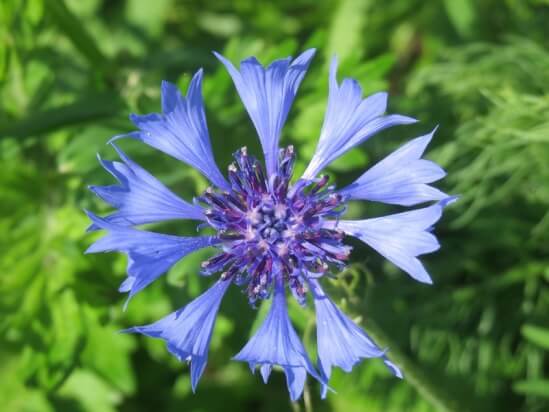

6.2. Division of plants
Since the structure of the roots in many varieties is different, then the division should be carried out in different ways. The division of adult bushes is carried out in such species as V. whitewashed, large-headed and Phrygian.
↑ Up,
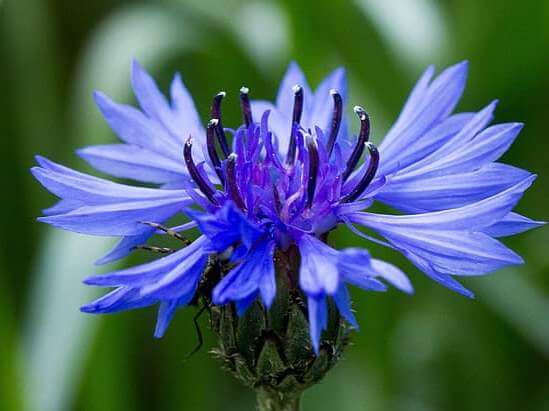

The bushes are dug in from the soil after complete flowering, the roots are shaken off from the remains of the soil. Old or rotten roots are cut with a garden knife or sterile pruning shears, sprinkling the cuts with wood ash for drying and disinfection.
The bushes are divided into parts so that each division has a well-developed ground part and its own root system. In order to help the plants minimize moisture loss, the stems are trimmed before planting, leaving only 10 cm in height.
↑ Up,
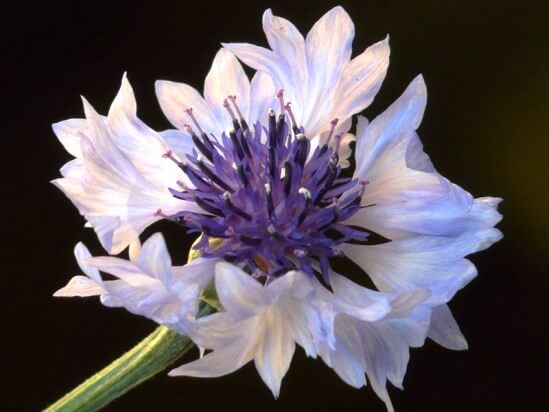

6.3. Reproduction by segments of rhizomes
In a similar way, only 2 varieties reproduce - V. mountain and V. soft. Plants are dug out of the soil, shaken off the roots from the remains of the soil and examined. When rotten and diseased areas are found, they are cut to healthy tissues, and the wounds are sprinkled with crushed coal or wood ash.
↑ Up,
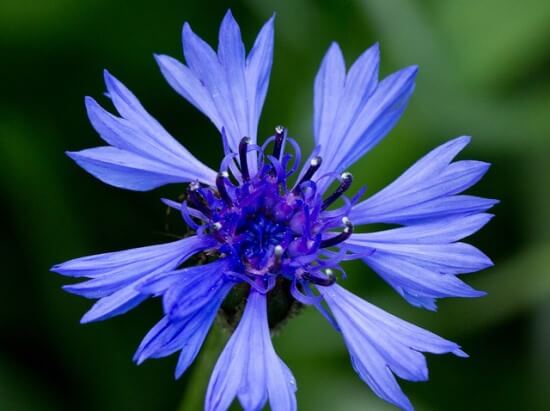

They outline the places where the division will take place - as a result of the procedure, each division should receive its own renewal soil, and better - 2 - 3 buds. The rhizomes are cut with a sharp secateurs, treating the wound surface with charcoal powder.
Delenki are planted in holes, watered and shaded from direct sun for 7 - 10 days - until rooting.
↑ Up,
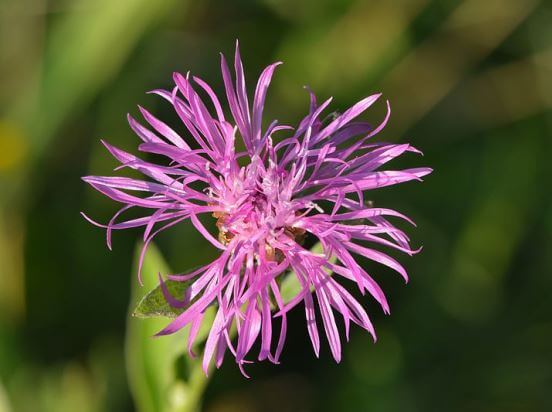

6.4 Separation of suckers
Root offspring are shoots that appeared next to the mother bush, on its own roots. For this method of reproduction, it is completely unnecessary to dig out the plant itself - it is enough to separate such an offspring with part of the root system using a shovel and plant it in another place. Thus, only V. Fischer reproduces.
↑ Up,
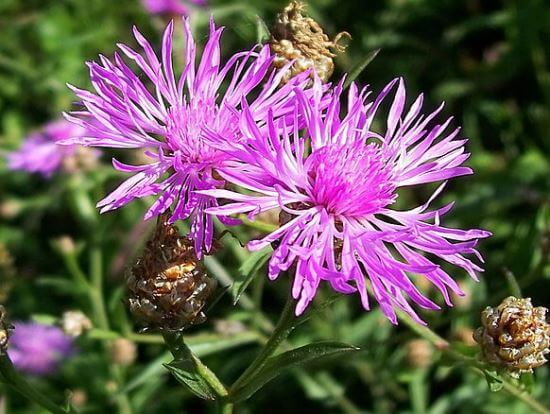

6.5 Applications in landscape design
Due to its attractive appearance, cornflower is often used in gardens, decorating rock gardens and rockeries with its buds, many flower beds and flower beds.
Of course, these plants look great in a field with cereals, contrasting perfectly with the golden stalks of wheat, however, you can also find a cornflower of worthy neighbors in the garden. That there are only poppies, marigolds and daisies, planted in the immediate vicinity of cornflowers.
Long and abundant flowering is not ignored by bees - when grown in a garden, a cornflower serves as an excellent honey plant and attracts many more beneficial insects to the site.
↑ Up,
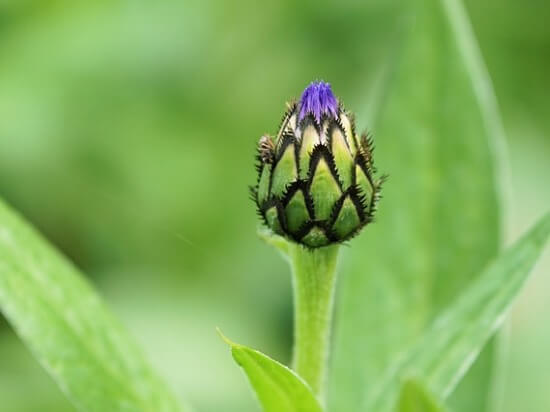

Recipes
The following tincture will have an excellent effect as a diuretic for edema and to increase appetite. Take one part of the flowers and fill it with ten parts of vodka. The medicine is insisted for two weeks, after which it is filtered. Take twenty drops before meals, which are diluted in a tablespoon of water at room temperature.
Decoction is good for making eye lotions for inflammation and fatigue. Take a teaspoon of flowers, add boiling water to a glass and keep on fire for several minutes. Then they insist for an hour, filter, moisten cotton pads in a cool broth and apply to the eyelids. It is also taken orally for two tbsp. tablespoons three times a day one hour before meals for angina, bronchitis and laryngitis.
They also prepare an infusion for colds. The same recipes are folk remedies for diarrhea in children and adults, stomach pain and kidney disease. The recipe is as follows.Three teaspoons of cornflowers are poured with 400 milliliters of boiling water, insisted for a couple of hours, and then filtered. Take the remedy 4 times a day 15 minutes before meals.
Cultivation in summer cottages
Cornflower can be harvested not only in fields and meadows, but also grown on your site. He prefers well-lit places. Plants are planted in pre-prepared soil in early spring, immediately after warming up the earth. A distance of at least thirty centimeters is maintained between the seedlings. Cornflower is propagated by seeds.
Plant care is simple. Cornflower loves moisture, so it must be watered consistently and moderately. Occasionally, the top layer of the soil is loosened. It responds well to feeding with phosphorus-potassium fertilizer. As soon as the plant begins to bloom, flowers are harvested from it. They are dried and used as a medicine for various ailments. The main thing is to strictly observe the proportions when preparing broths and infusions, prescribed by a doctor.

